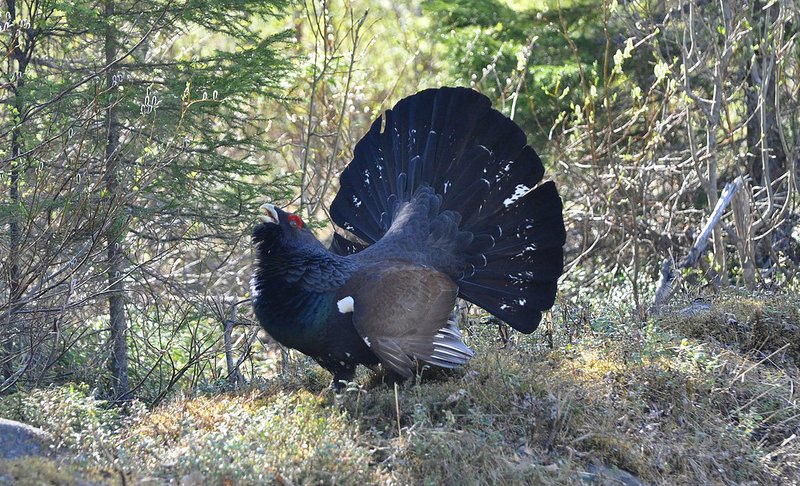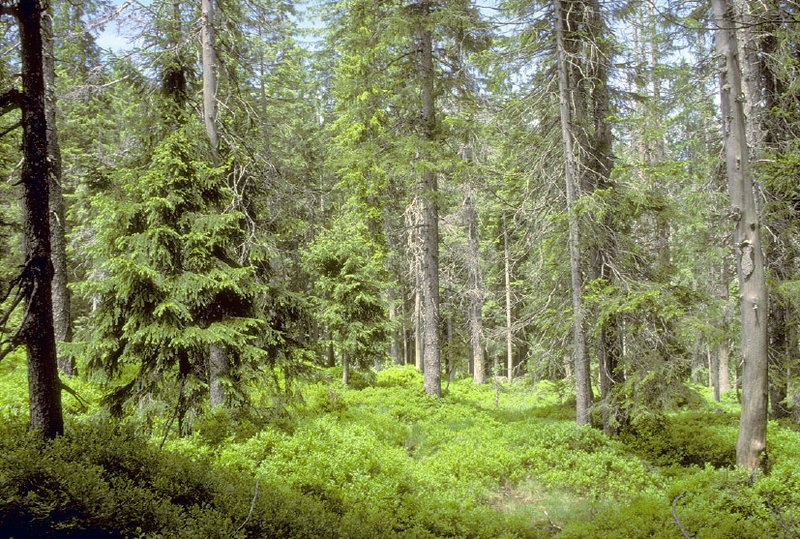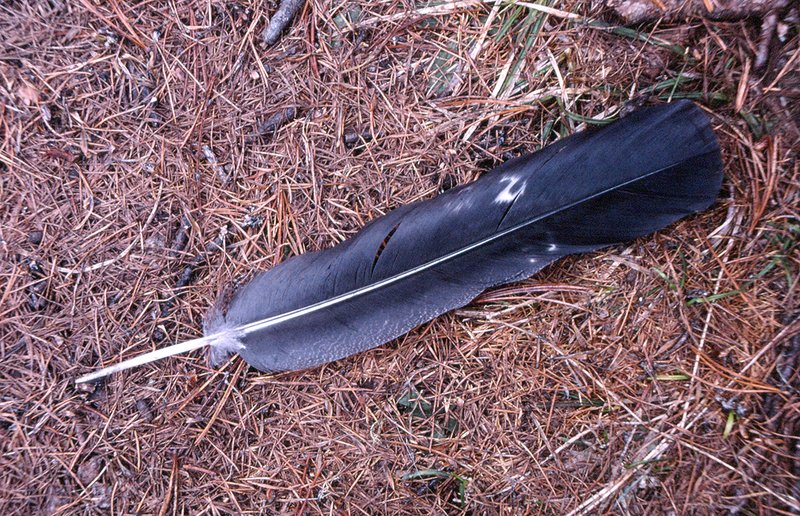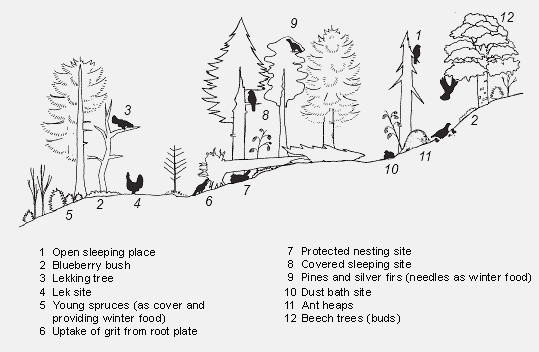The capercaille is the largest species of forest grouse world wide and apart from boreal coniferous forests it also inhabits central European mixed and coniferous forests. This species requires a habitat of undisturbed mountain forests which have plenty of light, are rich in structure and have well developed ground vegetation (Figs. 2 and 4). The females, as well as the males, have extensive home ranges. Therefore, large continuous areas and well structured, light-filled mountain forests are requirements for the survival of populations.

Fig. 1 - A male capercaille performing a courtship display. Photo: Tom_Rabe, pixabay.com
Decline in habitat quality
Such forests became rare during the 20th century due to a shift in interest in timber as a natural resource. Wood growth is currently greater than the amount of timber being used. As a result many stands are becoming overgrown; forests are getting darker, more uniform and are increasingly accessible. Many former forest gaps and litter meadows are now overgrown and the pressure imposed on habitats by snowshoe hikers, bikers, walkers and off-piste skiers is increasing.
In Switzerland the capercaille is under threat. A national census carried out in 2001 showed an existing population of around 450–500 males, which is about half of the population of 1971. Currently there are five existing populations which are regionally separated from each other.

Fig. 2 - A typical capercaille habitat: an open, well structured coniferous forest with trees of varying ages and well developed ground vegetation. Photo: Kurt Bollmann (WSL)

Fig. 3 - Feather of the capercaillie. Photo: Kurt Bollmann (WSL)
From research to promotion
In order for the capercaille to be able to survive as a breeding bird in Switzerland there needs to be a national approach with measures being adapted regionally where necessary. The basis for these measures was provided by research carried out in various projects at the Swiss Federal Research Institute WSL, the ETH Lausanne and the Swiss Ornithological Institute in Sempach. These results and recommendations were published in an issue of the "Ornithologische Beobachter" (volume 105, Issue 1), to name just one publication. Many of these results have also been incorporated into the Capercaille Action Plan Switzerland of the Federal Office for the Environment (FOEN).
The Capercaille Action Plan describes a strategy to protect and promote this demanding species of forest grouse. It defines the middle term aims, the focal points of the measures and the organisatorial, that is to say, the financial framework of the measures to be implemented. Central elements of this national action plan include: a focussing on spatial locations thus promoting areas of primary and secondary importance; qualitatively improving already populated areas using forestry habitat measures; limiting leisure time tourism, and improving potential habitats at present without populations. The responsibility for the implementation of this action plan lies with the Cantons which will be financially supported by the State because other rare bird species will also profit from measures taken to improve capercaille habitats.

Fig. 4 - An optimal capercaille habitat is very rich in structure and niches. Source: FOEN (2001): Auerhuhn und Waldbewirtschaftung.
Translation: Dawn Meister (Affoltern a. A.)
